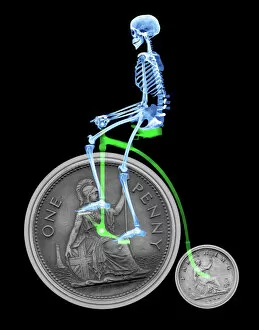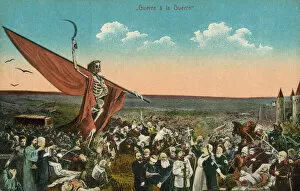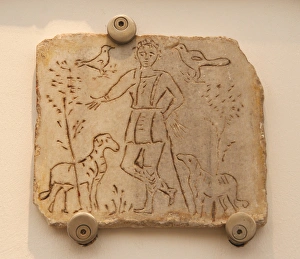Iconographic Collection
"Exploring the Iconographic World: From Our Lady of Vladimir to Orthodox Icons in St
All Professionally Made to Order for Quick Shipping
"Exploring the Iconographic World: From Our Lady of Vladimir to Orthodox Icons in St. Petersburg" Step into a world of rich symbolism and religious devotion as we delve into the fascinating realm of iconography. Journey back to the 12th century, where the renowned Our Lady of Vladimir icon first captivated hearts with its ethereal beauty and spiritual significance. But it's not just ancient icons that hold our attention – imagine a skeleton gracefully riding a penny farthing, an unexpected blend of whimsy and mortality. This juxtaposition reminds us that even in death, life can still be celebrated. Traveling further east, we find ourselves in St. Petersburg, Russia, surrounded by an array of Orthodox icons that showcase centuries-old traditions and artistic mastery. Each brushstroke tells a story steeped in faith and cultural heritage. Venturing back to ancient Rome, we stumble upon a tombstone adorned with Christian iconography – symbols representing eternal salvation amidst earthly tribulations. The Good Shepherd watches over his flock while Amias Licinia declares her unwavering devotion through art carved in stone. The Church of St. Clement of Tahull beckons us with its Pantocrator masterpiece created by the Master oozing divine authority and compassion simultaneously. It serves as a reminder that spirituality transcends time and place. Crossing borders once again, we encounter an exquisite ring from 15th-century England featuring depictions of the Virgin Mary cradling baby Jesus alongside Saints Margaret and Catherine – wearable devotion for those seeking solace during turbulent times. In Guerre A La Guerre (colour litho), war is depicted as futile through powerful imagery; it urges humanity to seek peace instead. Art becomes a voice against violence when words fail us. An iconic projection transports us to Venice before Napoleon's occupation – Arsenal stands tall amidst serene waters, reminding us how architecture can shape history itself while reflecting societal values at large.









